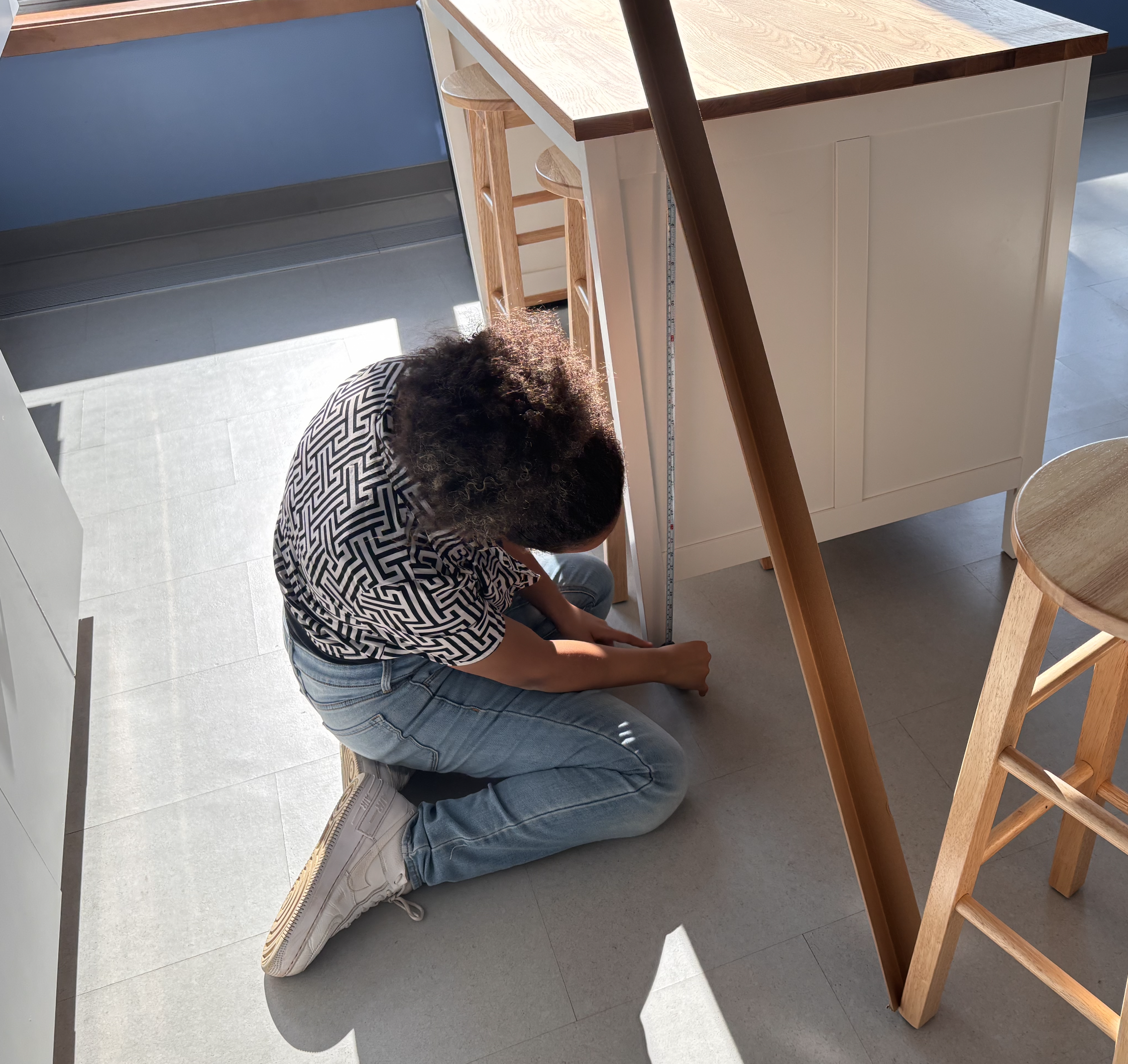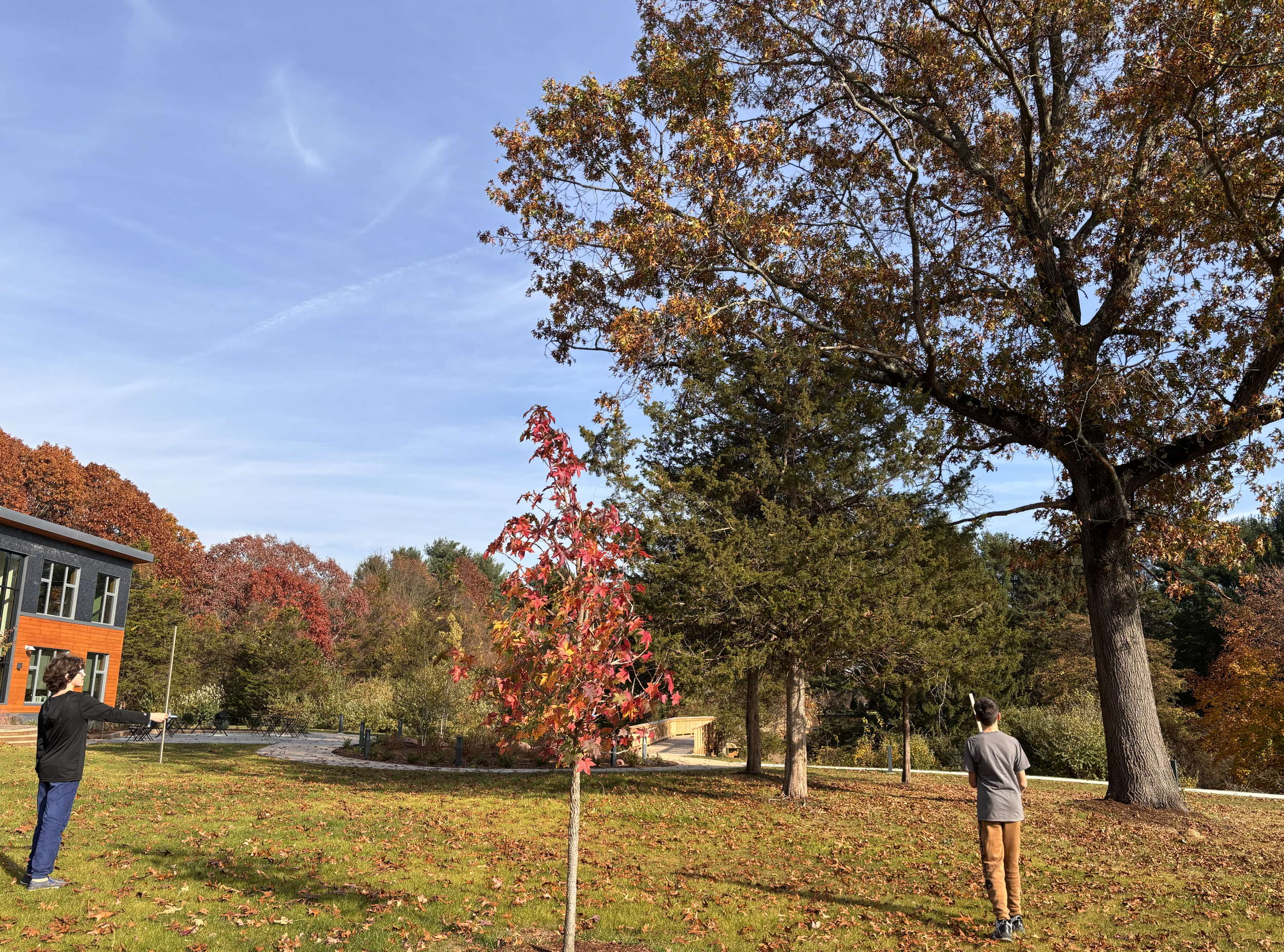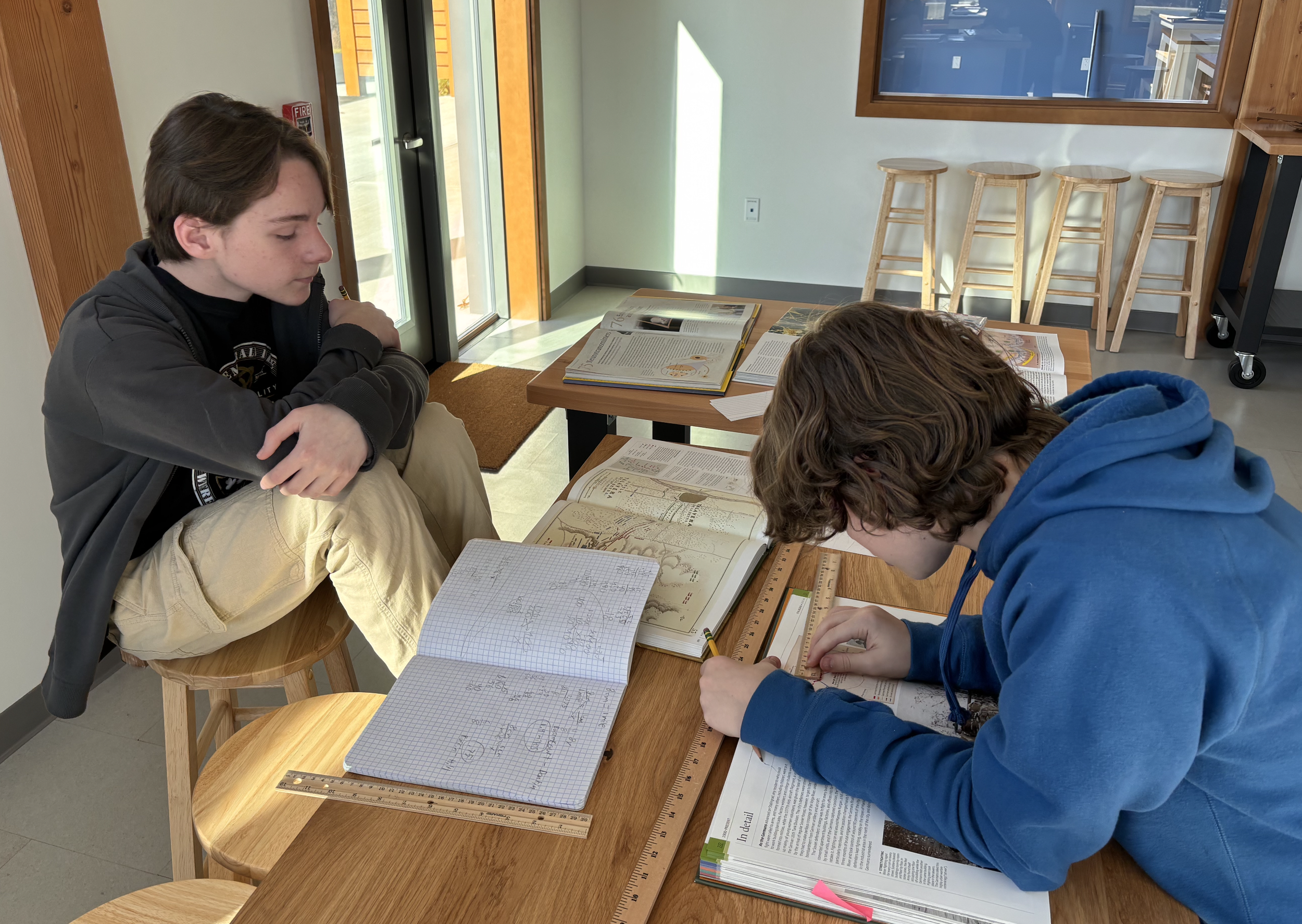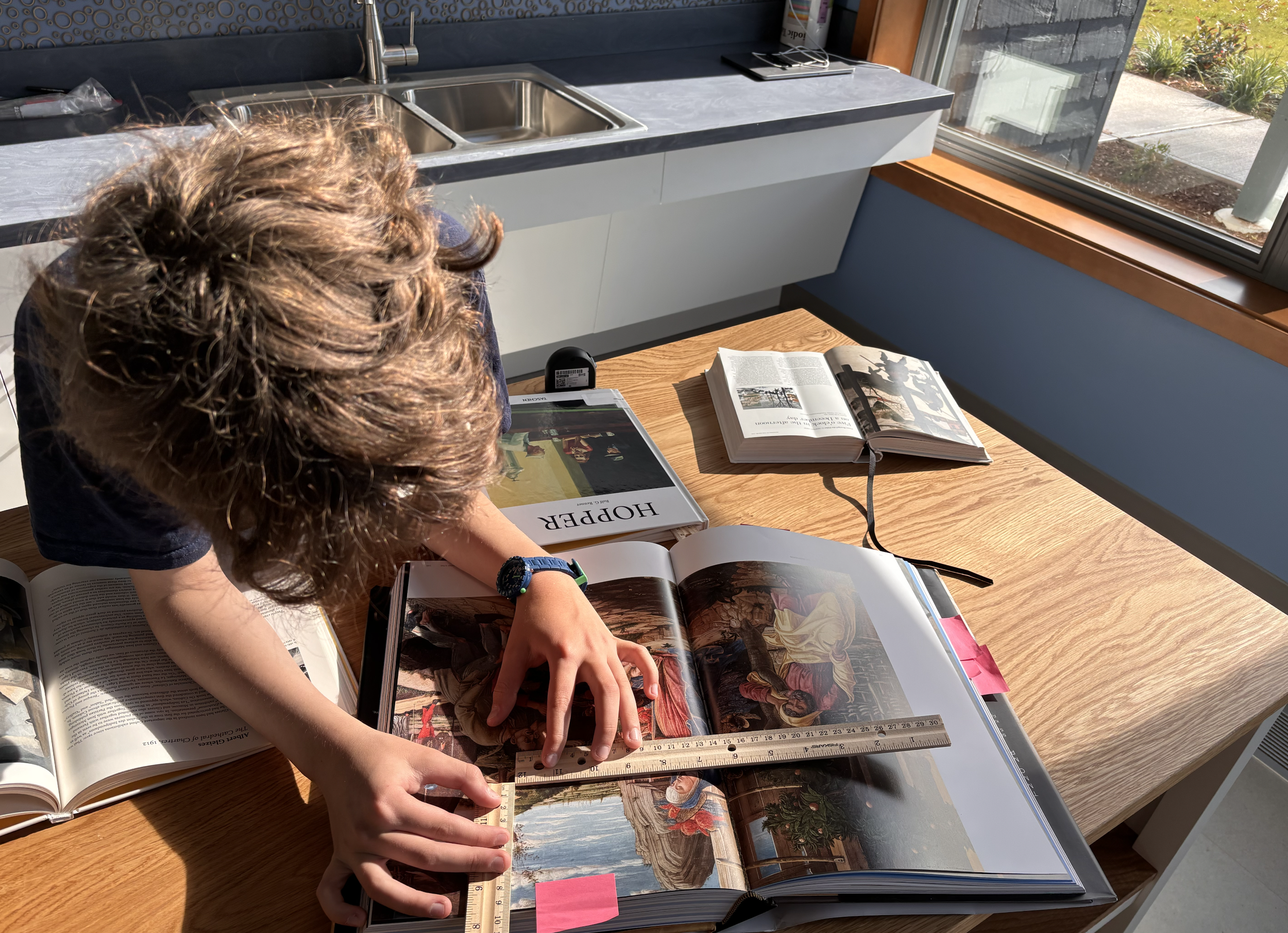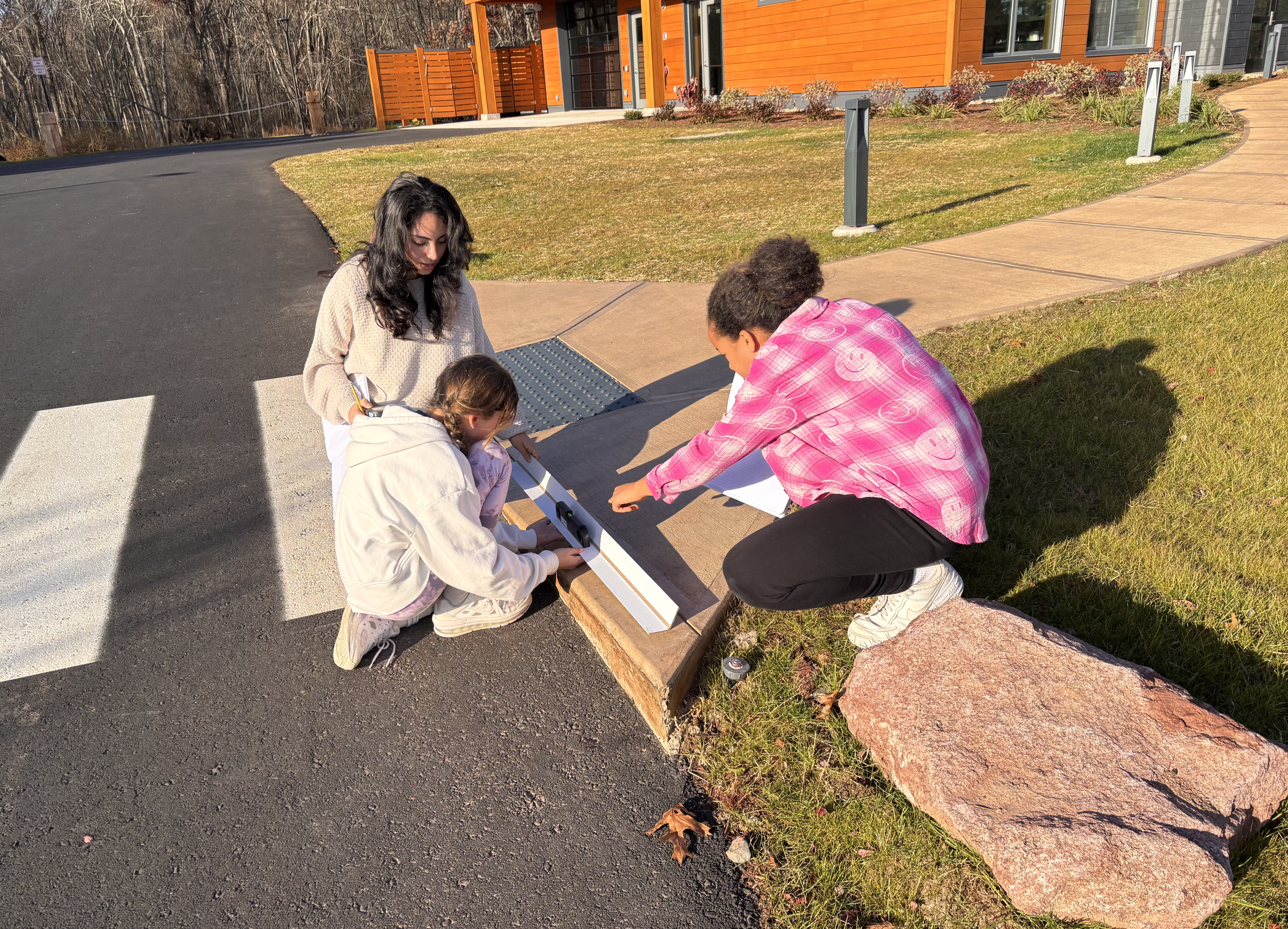
Upper School Blog
From Ramps to Renaissance Art: The Power of Slope
By Jennifer Staple-Clark, Founder and Executive Director, and Math & Science Specialist
Mathematician Henri Poincaré once said, "Science is built up of facts, as a house is built of stones; but an accumulation of facts is no more a science than a heap of stones is a house." Studies consistently find that the highest-achieving students are those who see learning as connected big ideas. At Slate School, our students learn how to think, they learn deeply, they wonder, and they are eager and excited to explore and to discover.
Recently, our 7th grade students embarked on an in-depth exploration of slope from multiple perspectives. They began by constructing their own ramps using cardboard, calculating the slope of each ramp, and measuring the speed of a ball rolling down. They noticed a pattern: the steeper the slope, the faster the ball’s speed. Inspired by their work on slopes, one student suggested measuring the slopes of the hills around our school. This led to a visit from Tom Daly, our civil engineer from SLR, who shared methods for measuring slope in the field. He also explained how slope calculations are essential for ensuring ramps meet Americans with Disabilities Act (ADA) accessibility standards. After his demonstration using a level and tape measure, students measured various slopes around the Upper School campus, including the concrete ramps, and assessed whether they met ADA requirements.
There are so many perspectives that can be explored through slope! Our students perused history of art books to find a variety of slopes in paintings, from roofs to mountains. They calculated the slopes of the images that they uncovered. One of our 7th grade students expressed an interest in the mathematics of linear perspective, while another student is studying Renaissance Art for her independent research project. This led to all of our students creating their own drawings that incorporated a vanishing point, and they measured the slopes of their lines that connect to the vanishing point. They noticed interesting patterns as they analyzed the slopes that they each drew.
Building on their understanding of slope as the ratio of height to distance, students also calculated the slopes of plotted points on a coordinate plane. Some students continued further into linear equations, exploring slope-intercept form and manipulating equations for graphing.
Our beloved Oak Tree that graces our Upper School also connected to our slope calculations and discoveries! Our students are engaged in a year-long study of the Upper School Oak Tree, as they read a chapter of The Nature of Oaks every month with our Environmentalist, Grace Kenney. Using triangular proportions and the concept of similar triangles, they calculated the height of the Oak Tree. They discovered that the triangles they used to calculate the tree's peak were proportional because they shared the same slope.
Our exploration of proportions also led many of our students to cartography. They explored historic maps from the Civil War, Revolutionary War, and other periods, to calculate distances by using proportional relationship, cross multiplying, and algebra. One of our students is studying Alexander von Humboldt for his project, while another student is studying Napoleon, and another is delving into Vermeer's paintings which often include maps. All of these students explored maps related to their project topics and calculated distances on the maps, while other students explored distances on maps of other periods. It was fascinating to discover historic forms of map measurements, including yards, Toise, and Latin words for the units of measurement.
For our 7th grade students, the study of slope became much more than a mathematical concept. It sparked an interdisciplinary journey, connecting art, history, engineering, and nature. Through hands-on learning and inquiry across subjects, they discovered how slope not only shapes the physical world around them, but also the way we understand and interpret the world.
